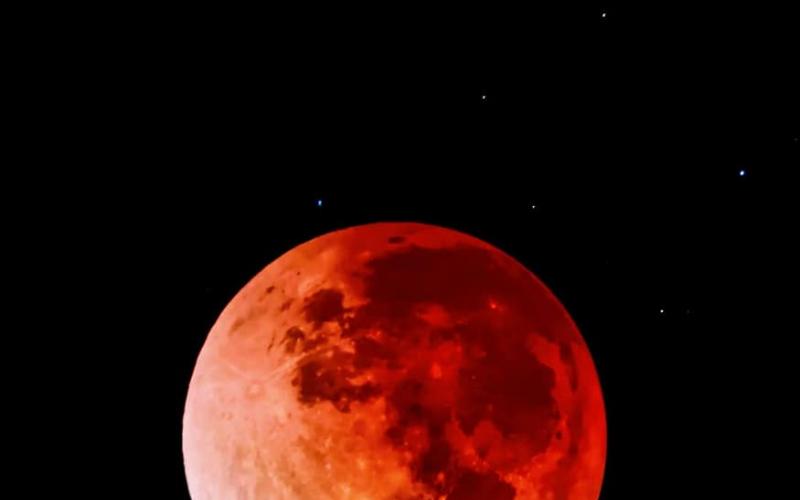Jessica Webb
editor@thesmokymountaintimes.com
Several area residents set their alarms to make sure they wouldn’t miss the total lunar eclipse late Sunday night and were not disappointed by the Super Flower Blood Moon of May 2022.
In Dillsboro, a group gathered at Innovation Station Brewery to make a night of the event. Many were students participating in the collaborative Smoky Mountains STEM collaborative from Southwestern Community College. The program is funded in part by a grant from NASA.
Enrique Gómez PhD, associate professor of physics and astronomy at Western Carolina University, helped lead the event and captured several great images of the moon through a telescope.
“A lunar eclipse occurs when the Moon enters the shadow of the Earth, which happens about twice, sometimes three times a year, when the Moon in its orbit crosses the Earth's orbital plane so that the Sun, the Earth and the Moon are on the same line,” Gomez explained by email.
“This May's Lunar Eclipse was a total lunar eclipse in that the totality of the Moon is inside the umbra part of the Earth's shadow so that the Sun cannot be seen at all from the perspective of an observer anywhere on the Moon,” Gomez said.
Not only was there a total eclipse, but it was happening during a super Moon, making it more visually dramatic.
But why the red color? This has to do with the light reflecting off the moon.
“During totality, the Moon appears red because it still receives scattered sunlight from the Earth's atmosphere,” Gomez explained. “If you were on the Moon looking at the Earth, you would see the dark disk of the Earth with a ring of red, which is the scattered light of the Earth's atmosphere.
“This is mostly red light because the Earth's atmosphere scatters preferentially blue light (which is why the sky looks blue to us) letting red through the thickest part of the atmosphere (which is why sunrises and sunsets look red).”
The more dust or clouds in the Earth’s atmosphere, the redder the Moon will appear, according to NASA.
The event spanned about five hours with totality for about 85 minutes, longer than most, according to NASA.
“During the partial phase, you can see the curvature of the Earth's shadow on the moon showing how the Earth has a curved surface and is not flat,” Gomez explained.
Swain County residents like others in the eastern continental U.S., and Central and South America got the best show including the Blood Moon.
In Swain County, Jeff Delfield, librarian at Marianna Black Library and amateur photographer, set his alarm.
“We go to bed relatively early, so I had to set an alarm to be up and in my backyard by 12:30 a.m. I had my camera on a tripod and ready to go. The moon was in full eclipse when it came into view on my driveway,” he explained.
“I used a modern Nikon digital camera and 300mm focal length lens. Because it was so dark, auto focus was impossible and manual focus was very difficult. Cloud cover set in at about 1:30 a.m.”
If you were like me and slept through it, the next opportunity to view a total lunar eclipse will be Nov. 22.

